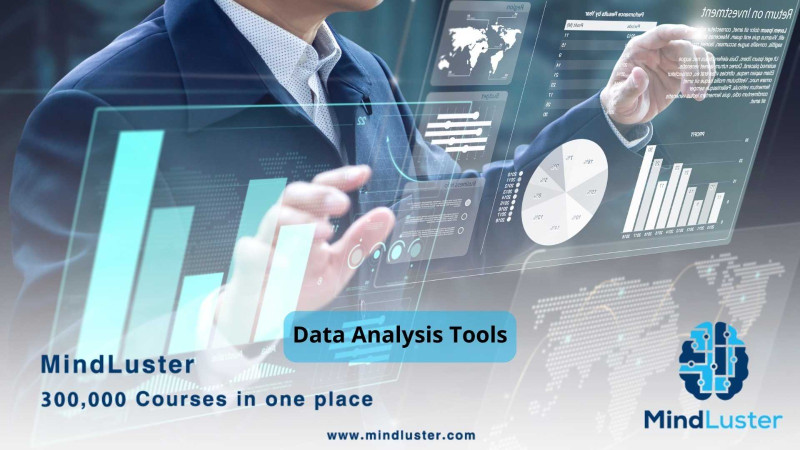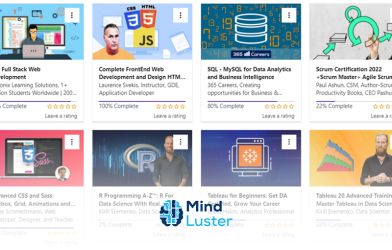Every piece of data holds a secret waiting to be uncovered. But without the right tools, these secrets remain hidden. As we know, analyzing and interpreting data is crucial for success in today's data-driven world. This article about essential data analysis tools was specially prepared to help unlock hidden secrets and insights and advance your understanding.
Data Analysis Tools
They are software and applications designed to collect, clean, process, and analyze data so that it can be represented and visualized easily. They can vary widely in their features, capabilities, and complexity. Choosing the appropriate data analysis tool depends on the data's nature, the complexity of the analysis, the user's expertise, and particular requirements. From an ocean full of data analysis tools, let’s have a look at some of the most famous, including:
QuestionPro
A platform known for its survey and research capabilities, it has expanded to offer basic data analysis tools while traditionally being famous for its survey functionalities. The tool is characterized by a user-friendly interface that allows users to visualize and analyze survey data.
The tool allows users to create surveys, collect responses, and analyze the gathered data. It provides basic tools for generating reports and visualizations based on survey responses.
The tool has pros, including survey customization options, real-time reporting features, integration capabilities, data export in various formats, and rich visualizations. The main cons are its limited advanced analytics features. As one of the most famous data analysis tools, QuestionPro provides the user with various pricing plans tailored to suit businesses of different sizes, starting at 99$ for one user per month.
Next on our agenda, let’s examine the second tool on our essential data analysis tools list.
Tableau
It represents a unique titan in data visualization and business intelligence, famous for its ability to convert complex datasets into interactive visualizations. Tableau is your go-to destination for professionals trying to make data-driven decisions.
Tableau connects to many data sources, allowing users to create interactive visualizations and dashboards. Its drag-and-drop interface makes it accessible, while its extensive visualization options serve diverse analytical needs.
The tool has many pros, including rich data visualizations and dashboards, an easy drag-and-drop interface, and a wide range of visualization options for diverse analytical needs.
After going through Tableau, let’s explore another one of the essential data analysis tools you need to know about.
Microsoft Power BI
Microsoft Power BI is a comprehensive business analytical tool that empowers users to visualize and share insights. It is one of the essential data analysis tools for sharing insights across organizations or embedding them in applications and websites.
The tool connects to various data sources, such as Microsoft services. Using Microsoft Power BI, you can create eye-catching interactive reports and dashboards, share insights, and leverage AI-powered analytics for advanced data exploration.
The pros of using Microsoft Power BI include seamless integration with all Microsoft products, robust analytics capabilities, scalability for enterprise use, and extensive visualization options. The only con of the tool is that its licensing costs can be high for some small organizations.
As powerful as Microsoft Power BI is, the next tool on our essential data analysis tools journey is not less impressive. Let’s have a look together.
Qlik Sense
The Qlik Sense tool is one of the most essential data analysis tools you need to learn. It provides data analytics software and a business intelligence platform. It allows users to load data from various sources, associate it, and visualize it without predefined queries. It can also create interactive dashboards and share insights for collaborative decision-making.
Zoho Analytics
As a cloud-based business intelligence and analytics platform, Zoho Analytics is specially designed to help users create reports and dashboards for informed decision-making. The platform allows users to import data from various sources, analyze it using AI-powered insights, and collaborate with other team members. The platform's pros include extensive integration options, AI-powered insights, and the ability to share features with others. Still, its only problem is that it is not as rich as other premium tools.
Additionally, Zoho Analytics is one of the most essential data analysis tools because it offers a diverse range of pricing plans, from free basic usage to paid plans. This accommodates small businesses with affordable choices and larger enterprises with more comprehensive plans, providing flexibility based on organizational needs.
You are mistaken if you think that is all the essential data analysis tools you need to know. There are still more. The following section will explore a famous tool: SAS.
SAS
SAS stands for Statistical Analysis System, a software suite for advanced analytics, business intelligence, and data management. It offers unique statistical abilities, handles large datasets efficiently, has strong data security measures, and is used extensively in industry.
Check out our SAS course for free
Google Analytics
Google Analytics is one of the best web analytical tools for implementing tracking code into websites or apps. It provides insights into website and app usage and is valuable for understanding user behavior. The tool gives you an indication of the fixable points within your website or app.
There is a free version of Google Analytics that includes basic features, while Google Analytics 360 has some other advanced features and is priced based on user requirements.
Looker
Using a model-centric approach, Looker is a business intelligence and data exploration platform enabling users to create and share reports and dashboards. The tool provides an organization's unified view of data and is considered one of the best.
Looker offers a cohesive data experience, real-time data exploration and analysis, enterprise scalability, and powerful collaboration and sharing features, though licensing costs can be high. The company’s pricing model is flexible, and organizations should contact Looker directly for a customized quote based on their specific requirements.
Its pros include cohesive data experience, real-time data exploration, powerful collaboration, and sharing features, while its cons can be simplified by its high licensing costs for some small businesses.
Python
Created by Guido van Rossum and first released in 1991, Python is a versatile, high-level programming language known for its simplicity and readability. It is a popular choice for both beginners and experienced developers. From procedural to object-oriented and functional programming, Python supports multiple programming paradigms. Its extensive standard library and thriving ecosystem of third-party packages enable developers to tackle a wide array of tasks efficiently.
One of Python’s most attractive features is its strong community support and continuous development, which make it a cornerstone of modern software development.
R
Developed by statisticians Ross Ihaka and Robert Gentleman in the mid-1990s, R is one of the most powerful programming languages specifically designed for statistical computing and graphics. The language is specialized with its extensive packages and libraries, enabling its users to easily manipulate complex data, statistical analysis, and graphical representations.
R's open-source nature ensures continuous contributions from its vibrant community, enhancing its capabilities and ensuring it remains at the forefront of data. Known for its flexibility and comprehensive statistical techniques, R is an essential tool for anyone involved in data analysis, research, and reporting.
Conclusion
Becoming a proficient data analyst requires a strong foundation of essential data analysis tools. From potent platforms like Qlik Sense and Microsoft Power BI to versatile programming languages like Python and R, learning the right tools is the key to unlocking concealed insights within your data.
Don't miss out on the opportunity to boost your career prospects with Mind Luster. With free certificates that hold weight on your resume or CV, you'll be one step closer to achieving your professional goals. Our courses will help you gather all the essential data analysis tools in one place.









